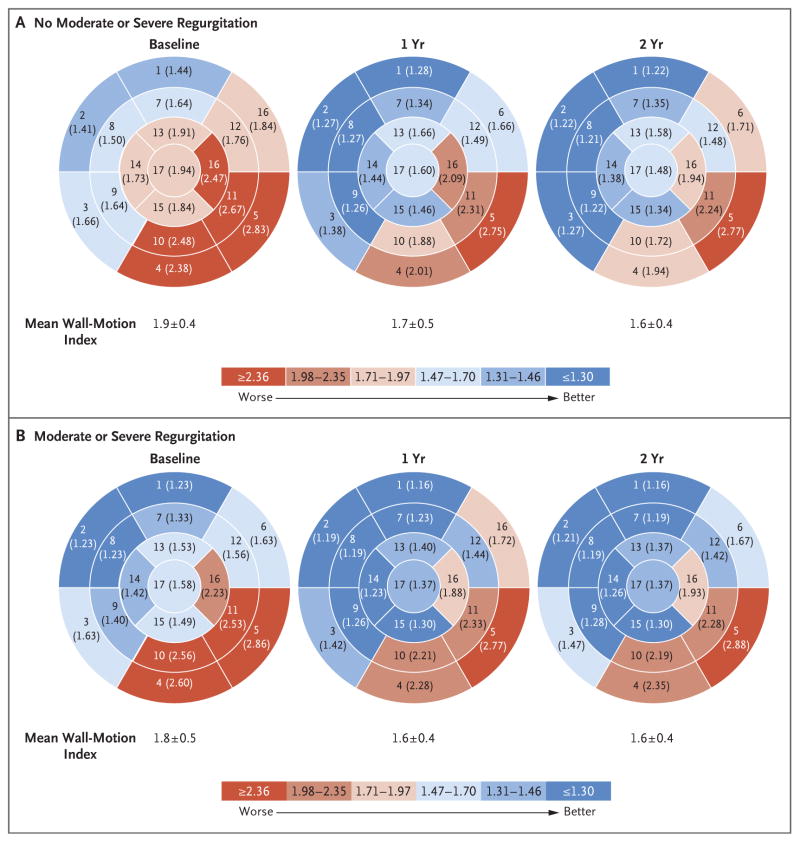Figure 1. Wall-Motion Scores at Baseline, 1 Year, and 2 Years, According to the Presence of Postoperative Moderate or Severe Mitral Regurgitation.
Shown are the results of analyses of each of 17 wall segments at rest for patients without moderate or severe mitral regurgitation and those with moderate or severe mitral regurgitation at 2 years after the procedure. Baseline values were recorded before the procedure. The values in parentheses are the mean wall-motion scores at three time points for each segment. Scores on the wall-motion index are as follows: 1, normal; 2, hypokinetic; 3, akinetic; 4, dyskinetic; and 5, aneurysmal. The sum of the wall-motion scores for the myocardial segments was divided by the number of segments to provide a wall-motion index. At 2 years, the relative percent improvement in the global wall-motion index was larger for patients free of moderate or severe mitral regurgitation than for those with mitral regurgitation (16.5±20.1% vs. 7.4±16.7%, P = 0.008). A chart showing the name of each numbered segment is provided in the Supplementary Appendix.

